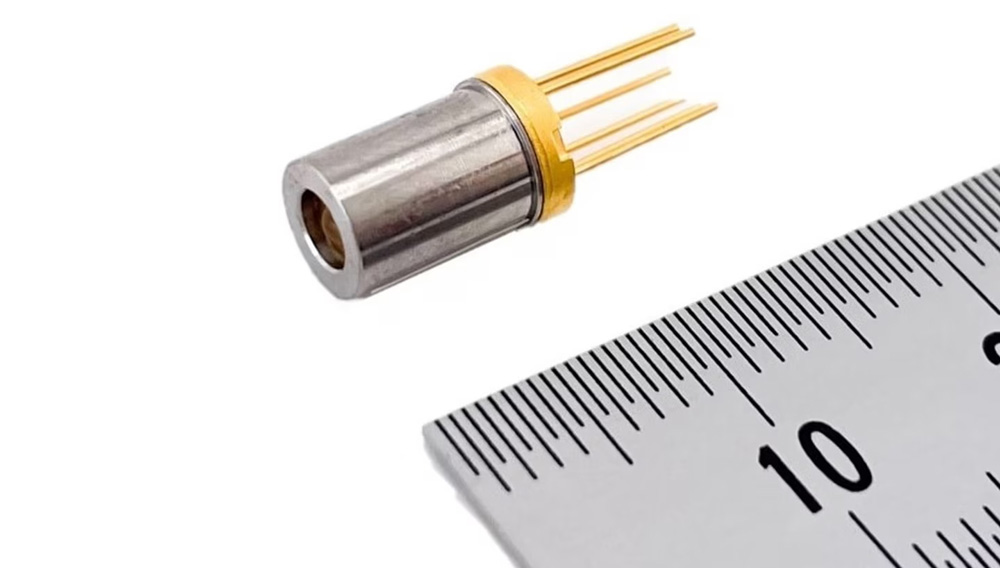News: Optoelectronics
8 April 2024
Mitsubishi Electric sampling DFB-CAN laser with built-in wavelength monitor for digital coherent communications
Tokyo-based Mitsubishi Electric Corp has begun shipping samples of a DFB-CAN distributed feedback laser diode with built-in wavelength monitor. The new light source — reckoned to be the industry’s first to use the inexpensive TO-56CAN package (often used for low-speed optical signals, such as passive optical networks) for digital coherent communication capable of high-speed, long-distance transmission — is expected to contribute to the realization of ultra-small, low-power consumption of optical transceiver modules.
Communication traffic is growing rapidly due to advances in IoT technology, high-resolution video streaming, and generative AI technology, requiring networks to deliver ever-higher speeds and capacities. However, faster optical communication signal speeds can cause waveform distortion due to chromatic dispersion, which limits signal transmission distances. Digital coherent communication corrects such distortions using digital signal processing technology, allowing optical signals to be transmitted at higher speeds and over longer distances compared with conventional intensity modulation methods. In parallel, the use of optical transceiver modules is increasing as optical communication traffic grows. Both trends are driving demand for optical transceiver modules and related components that combine small footprints and low power consumption.

Picture: The ML973A71 DFB-CAN with built-in wavelength monitor.
Mitsubishi Electric’s new DFB-CAN's compact package combines a DFB laser chip with a wavelength monitor chip in a volume of just 0.2ml (80% smaller than the firm’s discontinued FU-679PDF butterfly-type wavelength-tunable light source).
Its unprecedented low power consumption of just 1W (66% less than existing devices) was achieved by improving the thermal exchange element for temperature control in the DFB laser chip and optimizing the design for increased heat dissipation.
In addition, the newly designed wavelength monitor chip enables high-accuracy wavelength control of the laser output at a fixed wavelength of 1547.72nm, suitable for next-generation digital coherent communications.
Integrating he DFB laser chip and wavelength monitor chip in the same package enables accurate measurement of the output laser wavelength and can be used in combination with a wavelength-error correction circuit to achieve highly stable laser output.
The device is expected to contribute to miniaturization and low power consumption in both existing widely deployed 400Gbps digital coherent optical transceiver modules and next-generation 800Gbps modules currently under consideration by the Optical Internetworking Forum (OIF).
Future developments
The signal wavelength for digital coherent communication systems is expected to expand to two wavelength bands, i.e. 1550nm and 1310nm in the future, as the latter exhibits less waveform distortion due to chromatic dispersion, reducing the amount of power required for correction. Going forward, Mitsubishi Electric hence expects to develop a 1310nm-band light source and eventually begin supplying samples.








